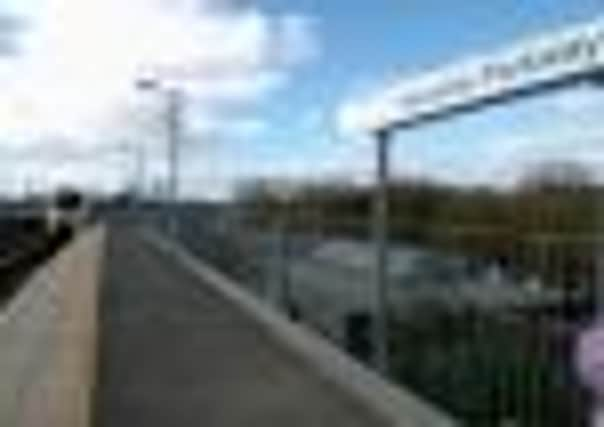‘Calling at Leamington Parkway and Kenilworth’ - idea for new station north of Leamington discussed


Warwick District Council chief executive Chris Elliott believes a ‘parkway’ station north of Leamington is one way to take strain off roads if plans for almost 2,000 new homes and up to 14,000 jobs around Coventry Airport come to fruition - and the cost compares favourably with high speed rail.
Mr Elliott discussed the idea with Kenilworth and Southam MP Jeremy Wright at the opening of Kenilworth’s Jubilee House public service centre last week.
Advertisement
Hide AdAdvertisement
Hide AdBut speaking to the Courier, Mr Elliott was equally keen to stress the idea “could come to nought” and would depend on Kenilworth station becoming a reality.
The district council has earmarked green belt land north of Leamington for almost 2,000 new homes, and 770 in Kenilworth in the first draft of its next local plan. Mr Elliott believes it is unrealistic to expect roads alone to cope with traffic, and suggested that money levied on developers could be spent on a ‘Leamington parkway’ station.
The ‘Nuckle’ - Nuneaton, Coventry, Kenilworth, Leamington - scheme is already underway between Nuneaton and Coventry. Extending it to Leamington would cost an estimated £10 million and a site for Kenilworth station is said to be ‘shovel ready’.
Mr Elliott said the line could one day link Leicester and Oxford, adding: “I know £10 million is quite a lot of money but we’re proposing spending £30 billion to go from London to Birmingham.”
Advertisement
Hide AdAdvertisement
Hide AdLeamington’s first station was in Milverton between Rugby Road and Warwick New Road. Mr Eliott stressed no sites have been identified, but did not discount the possibility of a second station.
Solihull and Leamington Rail Users’ Association chairman Frank Shaw agreed with the need to take pressure off roads, but said money would be better spent on a bigger car park at Leamington station. He noted upgraded services to London had led to a “phenomenal” increase in trips at some stations but fewer stops at others, adding it was rare to have stations so close together.